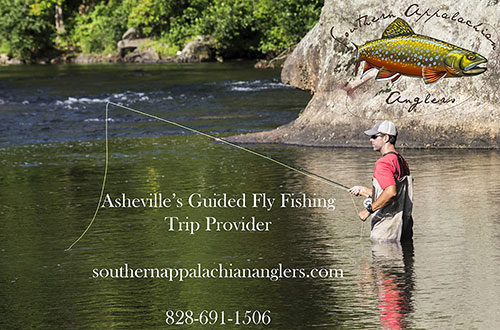Recently, I was on a guide trip with a client teaching him how to target small stream wild trout. We were trying to sight fish for a decent sized brown trout in the tail out of a pool, when I noticed another fly angler dash out of the woods at the head of the pool 20 yards away. He made one glance at us and began to cast vigorously into the top section of the pool, and I watched as all of the trout that had been spooked by the commotion ran down towards us. I tried to hide my discontent as I watched him charge upstream directly where I had planned on guiding my client for the first half of the day. Situations like this have become somewhat of an unfortunate occurrence on many of our trout streams recently. Granted, the greater majority of anglers are fine folks whom I wouldn’t mind one bit to share the water with. However, this is still an issue that needs to be addressed for the sake of keeping the good nature of our sport alive. In my opinion, this problem stems from many potential causes. The biggest, I think, are from a lack of communication and just plain ignorance.
Let’s face it; my generation cannot have a face-to-face conversation anymore. Friendly, chance encounters on the river, conversing about flies and fish lost, seem to be a part of a by-gone era. Many confrontations between anglers on a river could be avoided with just a simple “How are you doing? Where did you plan on fishing today?” Traditionally, I’ve always been taught that the first person at any given spot on a river has the prominent rights to it until he decides to leave. If I wanted to fish there, I should’ve gotten there sooner. As another unspoken rule (and this one, of course, depends on the stream), I’ve also been told to assume that an angler is going to fish for at least 50 – 100 yards upstream of where he started. If you think about it, 100 yards of trout water takes a fair amount of time to fish. If you run up to a spot and are unsure but can see the other angler: take five minutes and have a friendly conversation to try and avoid being “that guy” he’ll cuss at for the rest of the day.
I mentioned that “traditionally” these are some assumptions we’re supposed to make as anglers. I learned these traditions from many mentors by watching how they behaved on the river. Fly-fishing is becoming increasingly popular among younger generations. Many fly anglers are the first in their families to ever take part in the sport. They never had their grandfather or father take them fishing as they were growing up; consequently, they never had the opportunity to be taught basic manners regarding what to do, and not to do, when encountering other anglers. Granted, some of these manners are common sense, but as I said earlier, communication between two anglers can go a long way in solving these problems before they even begin.
Are there any other issues with anglers being rude? Definitely, but as a guide, I see these two as the most prominent on trout streams. If you’re a new angler, don’t be afraid to ask questions about this stuff if you’re unsure of stream fishing etiquette. Experienced anglers: do your part to show those who are inexperienced how to become better anglers and better stewards of the sport.
Ethan Hollifield is an Environmental/Physical Science Teacher and is also a guide for Southern Appalachian Anglers.

